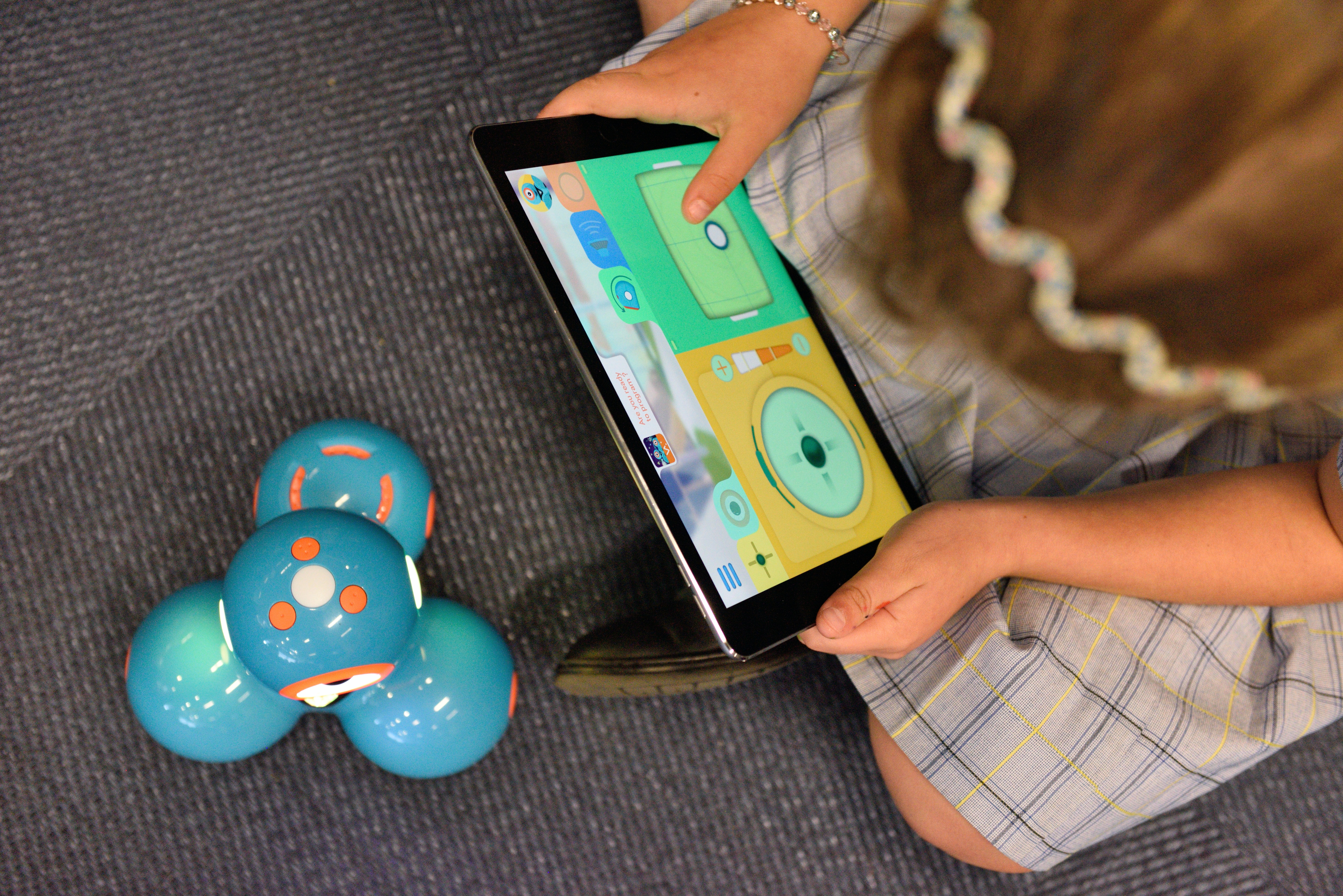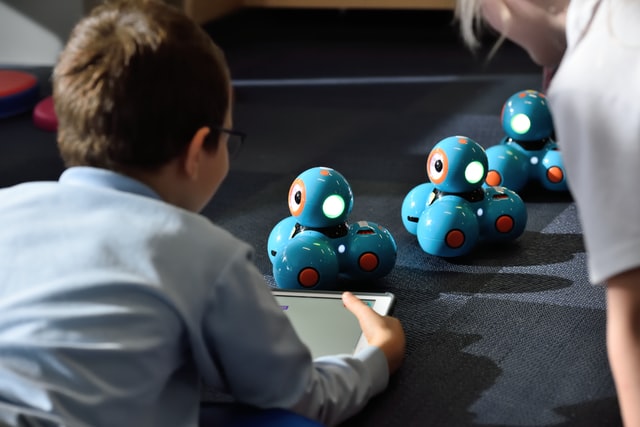The Gender Gap Persists in Computer Science Education
 Photo by Kelly Sikkema on Unsplash
Photo by Kelly Sikkema on Unsplash
A multiyear study shows increasing interest in computer science education, though retention of minorities and female students remains a challenge
- 0 Comments
- Oct 30, 2020 10:00:00 AM
- Posted by Natalia Galvis
- Topics: STEM, teachers, students, Technology, STEMchat, Edchat, teaching, online, lessons
5 main benefits of STEAM Education
 Image source: https://acerforeducation.acer.com/wp-content/uploads/banner-steam-education_1400.jpg
Image source: https://acerforeducation.acer.com/wp-content/uploads/banner-steam-education_1400.jpg
STEAM, or the synergy of science, technology, engineering, art and mathematics, is one of the hottest buzzwords of today’s education, and with good reason.
STEM, an educational model based on similar principles, but with the conspicuous absence of an A for the arts, capitalizes on the importance of technology and hard sciences in an increasingly digital world, but some have reacted to it with fear that our children will not be as well-rounded if we neglect the humanities.
Unlike STEM, which is interesting in its own right and undoubtedly profitable if we look at school mainly as a way to grant future graduates a high-paying career, but risks becoming hyper-focused on certain subjects and letting the rest fall by the wayside, STEAM encapsulates the whole of human knowledge in one handy acronym.
Here are the five greatest benefits of a STEAM-based education.
- 0 Comments
- Oct 29, 2020 10:00:00 AM
- Posted by Natalia Galvis
- Topics: STEM, teachers, students, Technology, STEMchat, Edchat, teaching, online, lessons
Adapting an Effective Math Collaboration Activity for Distance Learning
 Photo by Annie Spratt on Unsplash
Photo by Annie Spratt on Unsplash
An instructional coach and math teacher who developed a powerful model for student collaboration have tweaked it for the pandemic.
- 0 Comments
- Oct 28, 2020 10:00:00 AM
- Posted by Natalia Galvis
- Topics: STEM, teachers, students, Technology, STEMchat, Edchat, teaching, online, lessons
The Best Ways to Start a Career in the Robotics Industry
By Serena Dorf
 Photo by ThisIsEngineering from Pexels
Photo by ThisIsEngineering from Pexels
The robotics industry is one of the best industries to get into today. Most of the important aspects of our lives depend on it. These include medicine, manufacturing, military, and domestic purposes. Further, it helps in improving our lifestyles by making our work easier.
For this reason, the majority of industries are looking for robotics engineers to design and create machines for them. Leading companies in every industry are willing to pay more than the average to get and retain the best talent. If you are interested in starting a career in the robotics industry, we are going to show you how to start.
- 2 Comments
- Oct 27, 2020 10:00:00 AM
- Posted by Natalia Galvis
- Topics: STEM, teachers, students, Technology, STEMchat, Edchat, teaching, online, lessons
How Teachers are Preparing for The Next school Year
 Image source: https://acerforeducation.acer.com/wp-content/uploads/banner-55.jpg
Image source: https://acerforeducation.acer.com/wp-content/uploads/banner-55.jpg
School in a post-coronavirus world will never be the same. Having no choice but to rely heavily on online learning to guarantee continuity of education in a society disrupted by the pandemic has taught lessons to more than just the students.
It is now time for teachers to reflect on the experience of socially distanced school and prepare for the upcoming year and the unique challenges it will present.
Going back to a new normal after such a defining historical event may feel a little like travelling without a road map, but teachers can at least take comfort in the three keywords they can use to orient themselves in this uncharted land: engagement, personalization, interaction.
- 0 Comments
- Oct 26, 2020 10:00:00 AM
- Posted by Natalia Galvis
- Topics: STEM, teachers, students, Technology, STEMchat, Edchat, teaching, online, lessons
The Most Valuable STEM Skills in an Automated World
The professional world is automating at an unprecedented rate. By 2030, 20-40% of young workers' jobs could be automated, putting renewed stress on future-proof skills. While STEM offers security, it's not immune to the automation wave, either.
Many STEM skills and processes are standardized, data-centric and logical, making them ideal for automation. Simultaneously, with tech playing a more substantial role in everyday life, STEM workers are more crucial than ever. In the face of these changing needs, educators and learners alike need to rethink essential STEM skills.
In an automated workforce, the most valuable skills are typically those that are uniquely human. That often involves a focus on soft skills instead of the hard techniques frequently associated with STEM. With that in mind, here are five of the most valuable STEM skills for an automated world.
By Devin Partida
- 0 Comments
- Oct 9, 2020 10:00:00 AM
- Posted by Natalia Galvis
- Topics: EdTech, STEM, Curriculum, teachers, students, Technology, Edchat, Digital Technology, teaching, online, lessons, eLearning
5 Reasons Why Preschoolers Need STEM (And Why It Must Be Easy!)
STEM education, which focuses on Science, Technology, Engineering, and Mathematics, has seen a rise in early introduction in schools. As technical and scientific skills become more sought after in the industry, more schools are encouraging kids from as early as preschool to learn STEM
 Image credit: https://pixabay.com/photos/child-boy-toddler-preschooler-play-1522870/
Image credit: https://pixabay.com/photos/child-boy-toddler-preschooler-play-1522870/
However, some bodies are still not convinced of the importance of STEM in preschool. So, this article focuses on five critical reasons for teaching STEM in the early years.
By Nancy Howard.
- 0 Comments
- Oct 8, 2020 10:00:00 AM
- Posted by Natalia Galvis
- Topics: EdTech, STEM, Curriculum, teachers, students, Technology, Edchat, Digital Technology, teaching, online, virtual learning, lessons, eLearning
21st Century Skills: What Students Need to Succeed in Today’s Society
 Photo by Annie Spratt on Unsplash
Photo by Annie Spratt on Unsplash
“21st Century Skills” (or “Transferable Skills”) are the abilities students need to develop to succeed in our information-based society. Input from teachers, education experts and business leaders, gathered in the Partnership for 21st Century Skills, defined the P21 Framework, a graphic representation to better understand what these competencies are as well as the support systems necessary to produce 21st century student outcomes.
- 0 Comments
- Oct 7, 2020 10:00:00 AM
- Posted by Natalia Galvis
- Topics: EdTech, STEM, Curriculum, teachers, students, Technology, Edchat, Digital Technology, teaching, online, virtual learning, lessons, eLearning
What are the Benefits of Learning To Code as a Child?
Coding is becoming one of the biggest trends to hit education since virtual reality. Because of this, parents and schools all over the globe are interested in teaching children to code. While teaching children to code may not turn them into a billionaire like Mark Zuckerberg, it certainly comes with a lot of benefits. Many of the advantages that I speak of are unknown to general public.
 Photo by cottonbro from Pexels
Photo by cottonbro from Pexels
So instead of watching people jump on the coding bandwagon because we said so, we decided to write an article that discusses the benefits of learning how to code as a child. That way parents and schools can make an informed decision. Believe it or not, some of the advantages that we are about to share may shock you. Well, without further ado, here is our list of the benefits of learning to code as a child.
- 0 Comments
- Oct 6, 2020 10:00:00 AM
- Posted by Natalia Galvis
- Topics: Math, EdTech, STEM, Curriculum, Special Education, teachers, autism, students, Technology, VR, Edchat, Digital Technology, teaching, online, virtual learning, lessons, eLearning
Advantages and Challenges of AI in Education for Teachers and Schools
By Aaron Swain
The future of education is deeply linked with the development of new artificial intelligence technologies and computing. Even while the debate is still ongoing as to what extent AI will replace teachers' presence. AI in the U.S. Education keeps growing at a reasonable rate. It is projected to go as high as 47.5% by 2021.

- 4 Comments
- Oct 5, 2020 10:00:00 AM
- Posted by Natalia Galvis
- Topics: Math, EdTech, STEM, Curriculum, Special Education, teachers, autism, students, Technology, VR, Edchat, Digital Technology, teaching, online, virtual learning, lessons, eLearning
Relevant Posts
Popular Posts
Subscribe to Email Updates
-
I Want To Learn MoreADDITIONAL INFORMATION


 Photo by
Photo by 